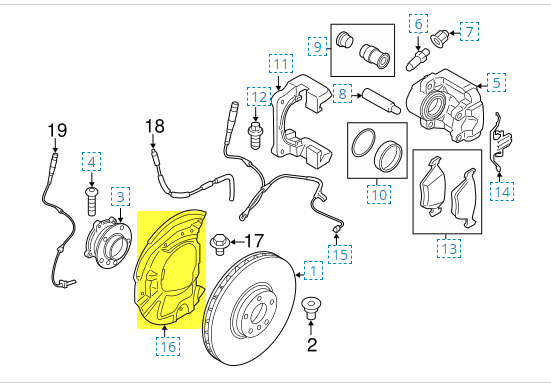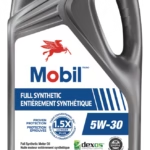

2011 BMW X5 M Brake Caliper Diagram & Design Explained

The 2011 BMW X5 M isn’t your average family SUV. Powered by a 4.4-litre twin-turbocharged V8 delivering 555 horsepower and 500 lb-ft of torque, it blurs the line between luxury hauler and track-ready machine. But with performance that rivals sports sedans, the X5 M demands a braking system engineered to handle its 5,300 lb curb weight without compromise.
Limited Time Automotive Amazon DealsAt the heart of its stopping power lies an aggressive and overbuilt brake system, centered around large multi-piston brake calipers. In this post, we’ll take a deep dive into the brake caliper layout, design architecture, BMW OEM specs, and functionality—supported by a detailed diagram of the caliper system.
🛠 Overview: What Is a Brake Caliper?
Before diving into the specifics of the X5 M, let’s review what a brake caliper actually does.
Limited Time Automotive Amazon DealsA brake caliper is a clamping device that houses pistons and brake pads. When you apply the brake pedal, hydraulic fluid presses the pistons inward, forcing the pads against the brake rotor to slow the vehicle via friction. In high-performance vehicles like the 2011 X5 M, the calipers must withstand:
- High temperatures
- Rapid heat cycles
- Heavy loads
- Repeated high-speed braking
📊 2011 BMW X5 M Brake System Specifications
| Component | Specification |
|---|---|
| Front Calipers | Fixed, 4-piston Brembo aluminum |
| Rear Calipers | Fixed, 2-piston aluminum |
| Rotor Type | Cross-drilled & internally vented |
| Front Rotor Size | 395 mm (15.6 in) |
| Rear Rotor Size | 385 mm (15.2 in) |
| Brake Pad Material | High-performance compound (semi-metallic) |
| ABS / DSC Integration | Yes (BMW M Dynamic Mode) |
The front 4-piston fixed calipers are the focal point of the system—machined from lightweight aluminum, painted M-Blue from factory, and clearly marked with the ///M logo.
🔍 Understanding the Caliper Diagram
Limited Time Automotive Amazon DealsIf you were to look at an exploded-view brake caliper diagram for the 2011 BMW X5 M front brakes, here’s what you’d see:
1. Caliper Body
Made of monoblock aluminum, this fixed caliper design has no sliding pins like floating calipers. It houses four hydraulically actuated pistons (two on each side), which push the pads directly onto the rotor. BMW chose fixed calipers to ensure symmetrical pad wear, more even pressure distribution, and better heat dissipation.
2. Pistons
The front caliper contains four opposed pistons—two per side. Each piston features dust boots and fluid seals. The pistons are staggered in diameter to prevent pad tapering, and their aluminum or phenolic material resists thermal expansion.
3. Brake Pads
Mounted inside the caliper body, the pads are held in place with anti-rattle clips and retaining pins. The X5 M uses large, high-friction pads that provide ample bite, even under repeated heavy braking.
4. Mounting Bracket
This cast bracket bolts to the steering knuckle and provides a solid mounting point for the caliper body. It’s often included in full OEM caliper assemblies and must be torqued correctly to prevent deflection under load.
5. Bleeder Screws
Located at the top of the caliper, these are used to purge air from the system during bleeding. A dual-bleeder layout ensures trapped air is removed from both halves of the caliper.
6. Brake Line Port
This is where the hard brake line or braided stainless hose threads in, delivering hydraulic pressure from the master cylinder. On M models, the caliper line routing is optimized to reduce flex and heat soak.
🎯 Performance Design Highlights
✅ Fixed Caliper Architecture
Unlike floating calipers used in base X5 models, the M variant uses fixed Brembo calipers. These apply force from both sides of the rotor at once, resulting in:
- More consistent pedal feel
- Better fade resistance
- Shorter stopping distances
✅ Oversized Rotors
The large 395 mm front and 385 mm rear rotors aren’t just for show—they dramatically increase surface area and help with thermal capacity during repeated stops. BMW uses vented and cross-drilled rotors to allow hot gases and debris to escape.
✅ Multi-Piston Balance
Four pistons up front, two in the rear—this configuration balances braking forces during aggressive deceleration and reduces the risk of rear-end lockup under hard stops.
🧩 Common Issues and Wear Points
Despite its robust design, the X5 M’s caliper system isn’t without challenges:
1. Sticking Pistons
Piston seals can deteriorate over time, leading to uneven pad wear or a stuck caliper. Regular flushing of brake fluid every 2 years helps prevent this.
2. Rotor Warping
Due to heat cycling, it’s not uncommon for rotors to warp if pads are low or if brake bedding isn’t done properly after install.
3. Caliper Paint Peeling
Factory-painted calipers may show signs of discoloration or flaking under heavy use. Powder coating or repainting is common among enthusiasts.
4. Rattle or Pad Movement
Worn anti-rattle clips or improperly installed pads may result in noise or vibration. Always inspect hardware during service.
🔧 Upgrades and Replacements
Owners looking to maintain or upgrade their brake system often consider:
- Steel braided brake lines (for firmer pedal feel)
- Carbon ceramic rotor kits (for track use)
- Upgraded pad compounds (like Hawk or EBC for better bite)
- Rebuild kits for calipers including new seals and pistons
- Caliper powder coating for a fresh look
🧠 Pro Tips for DIY Enthusiasts
If you’re working on your own 2011 BMW X5 M brakes, here are a few key reminders:
- Torque Specs Matter – Caliper bracket bolts require 110 Nm (81 ft-lbs) front and 70 Nm (52 ft-lbs) rear.
- Use OEM Fluid – BMW recommends DOT 4 low-viscosity brake fluid.
- Bleed the System Thoroughly – Always use both bleeder screws and bleed in the proper order (starting from the furthest wheel).
- Watch for Pad Taper – If pads are wearing unevenly, inspect piston function immediately.
🧭 Final Thoughts
The 2011 BMW X5 M braking system, anchored by its high-performance multi-piston calipers, is a testament to M engineering. With the weight and speed of this luxury SUV, braking performance isn’t just a bonus—it’s a necessity. The fixed aluminum calipers, large rotors, and staggered pistons combine to offer track-capable stopping in a street-friendly package.
Understanding the brake caliper diagram isn’t just useful for maintenance—it helps you appreciate the precision engineering that makes this vehicle so capable. Whether you’re replacing worn components, upgrading performance, or simply learning the layout, the 2011 X5 M’s caliper design stands as one of the most well-rounded systems BMW has offered in an SUV.
Add a comment Cancel reply
Categories
- Auto Detailing (1)
- Car News (2)
- Car Reviews (1)
- How To (1)
- Uncategorized (156)
Recent Posts
About us

Related posts


Ontario G2 License Restrictions 2026

Cost of a Hellcat in Canada: Charger, Challenger & Engine Prices Explained








